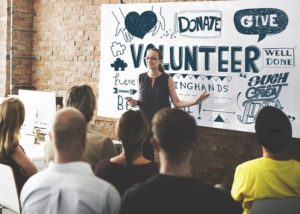The True Value of Your Company May Be Different From What You Think

The True Value of Your Company May Be Different From What You Think
Approaches to Value Intangible Assets
Posted: 3/31/11
I’ve received a lot of inquires asking how to value a company that has yet to generate any revenue, has not reached profitability, and yet, it has a substantial history of expenses. Most are start-up companies in bio-tech or software industries with intangible assets such as patents, internet domain names, business contracts, etc.
At first, these companies may appear to have little or no value. After considering the intangible assets, the true value of your company maybe higher than you think.
Traditionally, the value of a company is assessed based on the value of tangible assets and working capital. However, in today’s increasingly knowledge-based economy, it is often the company’s intangible assets that determine a large proportion of its value. Businesses are often worth far more than the sum of their tangible assets and working capital.
So, when determining a company’s worth, it is crucial to properly value its intangible assets, even if they did not appear on the company’s balance sheet. The Financial Accounting Standards Board (FASB) classified intangibles into five categories:
Technology-based Intangible Assets such as computer software, databases, and trade secrets (secret formulas, processes or recipes, etc.).
Marketing-Related Intangible Assets such as trademarks, trade names, service marks, newspaper mastheads, internet domain names, non-competition agreements.
Customer-Related Intangible Assets such as customer lists, order or production backlogs, customer contracts and customer relationships including non-contractual relationships.
Artistic-Related Intangible Assets such as plays, operas, ballets, books, magazines, newspapers, pictures, photographs.
Contract-based Intangible Assets such as licensing and royalty agreements, advertising, construction, service or supply agreements, lease agreements, franchise agreements, employment contracts.
Intangible asset valuations are also required by ASC 805 (formerly SFAS 141) Business Combinations, FASB ASC 350 (formerly SFAS 142) Goodwill and Other Intangible Assets and FASB ASC 350 (formerly SFAS 142) fair value measurements. The most common valuation approaches to value intangible assets include:
Income Approaches, these are usually applied when directly generated revenue or income from an asset can be estimated. The value of the asset is estimated by the economic income that will be generated over the remaining useful lifetime of the asset. The three most common Income Approaches are:
Discounted Cash Flow Method, which is by far the most straight forward and common approach.
The Relief from Royalty Approach, is based on the premise that a property’s value can be measured by what the owners of the property would pay in royalties if they did not own the property; if they had to license it from a third party; or, it’s the amount of income that the owner would generate by licensing the assets to others.
The multi-period excess earnings method, measures the present value of the future earnings to be generated during the remaining life of the assets.
It forecasts the operating, debt-free, cash flows available from the asset, deducts from the debt-free cash flows after-tax returns on contributory assets, and then discounts them back to present values at an appropriate risk-adjusted discount rate.
Cost Approaches, are commonly utilized when the directly generated revenue and income is difficult to estimate. The asset is valued by assessing the costs that the firm would incur in re-creating the asset. The replace and reproduction costs could include aspects like labor, materials and capital costs incurred.
Market Approaches, are performed by looking at recent transactions in the open market with similar assets and with comparable attributes (industry sector, size etc.). Value is determined by using the market asset transaction as a proxy for the target asset.
Unlike tangible assets, there are not many transactions involving intangible assets. And even for assets that are sold such as copyrights and patents, transactional data may not be published. Therefore, Market Approaches are usually preferred but often difficult to perform.
All of the approaches should be considered and only the most appropriate methods should be selected for an intangible asset valuation. Just because it looks like a duck, walks like a duck and quakes like a duck, it may be worth for more than a duck when taking intangible assets into consideration.
For this reason, identifying and valuing intangible assets in advance of a purchase or post acquisition have become necessary steps in the due diligence process and for financial reporting purposes.
If you would like more help or information about valuing intangible assets, please contact Alan Olsen, Managing Partner, at aolsen@groco.com.
GROCO is a full-service certified public accounting firm, advising and assisting our clients with their accounting, tax, wealth preservation and business valuation needs. Our business valuations group has preformed hundreds of valuations of privately held corporations and businesses totaling over $3 Billion in appraised values.
Our business valuation analysts are certified, with experience that includes over sixty-five different industries from all geographical regions of the US and all stages of enterprise development, with particular emphasis on early stage companies in the Silicon Valley.
To receive our free newsletter, contact us here.
Subscribe our YouTube Channel for more updates.

Alan Olsen, is the Host of the American Dreams Show and the Managing Partner of GROCO.com. GROCO is a premier family office and tax advisory firm located in the San Francisco Bay area serving clients all over the world.
Alan L. Olsen, CPA, Wikipedia Bio

GROCO.com is a proud sponsor of The American Dreams Show.

The American Dreams show was the brainchild of Alan Olsen, CPA, MBA. It was originally created to fill a specific need; often inexperienced entrepreneurs lacked basic information about raising capital and how to successfully start a business.
Alan sincerely wanted to respond to the many requests from aspiring entrepreneurs asking for the information and introductions they needed. But he had to find a way to help in which his venture capital clients and friends would not mind.
The American Dreams show became the solution, first as a radio show and now with YouTube videos as well. Always respectful of interview guest’s time, he’s able to give access to individuals information and inspiration previously inaccessible to the first-time entrepreneurs who need it most.
They can listen to venture capitalists and successful business people explain first-hand, how they got to where they are, how to start a company, how to overcome challenges, how they see the future evolving, opportunities, work-life balance and so much more..
American Dreams discusses many topics from some of the world’s most successful individuals about their secrets to life’s success. Topics from guest have included:
Creating purpose in life / Building a foundation for their life / Solving problems / Finding fulfillment through philanthropy and service / Becoming self-reliant / Enhancing effective leadership / Balancing family and work…

MyPaths.com (Also sponsored by GROCO) provides free access to content and world-class entrepreneurs, influencers and thought leaders’ personal success stories. To help you find your path in life to true, sustainable success & happiness. It’s mission statement:
In an increasingly complex and difficult world, we hope to help you find your personal path in life and build a strong foundation by learning how others found success and happiness. True and sustainable success and happiness are different for each one of us but possible, often despite significant challenges.
Our mission at MyPaths.com is to provide resources and firsthand accounts of how others found their paths in life, so you can do the same.
Estate Planning for the Wealthy
Estate Planning for the Wealthy When was the last time you looked at your estate plan? If you can’t answer that question, either because it’s been so long that you can’t remember or because you still don’t have an estate plan in place, then you have some work to do. With the New Year almost…
Top 5 Ways to Get Out of Debt
Top 5 Ways to Get Out of Debt Another New Year is upon us and many people like to use this time to evaluate their life, including their financial well-being. It’s also a time to make resolutions or goals. One common goal at this time of year is to finally get out of debt. Debt…
Should Millennials Be Worried About Their Money Under Trump?
Should Millennials Be Worried About Their Money Under Trump? President Trump is coming and ready or not his presidency will likely affect you to at least some degree. While trump’s policies will have varying degrees of influence on different people, depending on their life circumstances, almost everyone will see changes to their financial status once…
How the Wealthy Start Charitable Foundations
How the Wealthy Start Charitable Foundations Many of the world’s wealthiest individuals share many common traits and life experiences. They also share a common interest in using their wealth for good. Some of the world’s greatest how to start a charitable foundation was founded by some of the wealthiest people, including Bill and Melinda Gates,…




